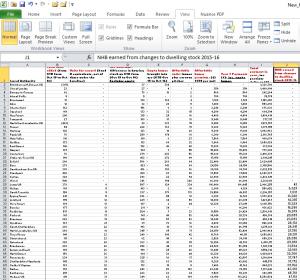



We have analysed the provisional NHB allocations for 2017-18 to try and gauge the impact of the changes in the NHB regime. To do this we have combined the provisional allocations table with more detailed data extracted from the current year's NHB calculator. The results are contained in an analysis that you can find in our Information Library here. This is for Full Members only so you will need to be logged in to access it.
The key things to remember when getting to grips with the figures are:
- this year authorities are only getting 5 years worth of NHB, not 6 as previously: they are getting the rewards for years 3,4,5,6 and 7
- the 0.4% baseline has been applied to this year's figures
